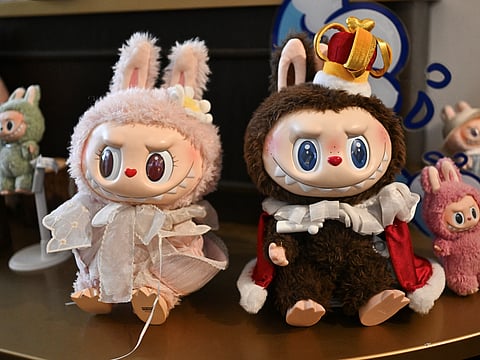Labubu dolls: Can airlines pick up tips from global toy sensation?
Ample room for airlines to create further bespoke experiences that fliers will crave for

In April, a seemingly innocuous toy - Labubu - ignited a viral phenomenon.
Engineered by Pop Mart as part of a blind-box series, the toy became a masterclass in behavioral economics. One figure resold for over $3,000. TikTok unboxings racked up millions of views. In just 24 hours, Pop Mart’s CEO Wang Ning saw his net worth rise by $1.6 billion.
What made it remarkable wasn’t just the product, but the design behind it: no previews, randomized contents, and a deliberate scarcity model. For aviation leaders facing an era of margin compression and experience commoditization, there’s a powerful message here: behavioral economics isn’t just a tool - it’s a strategy.
Why behavioral economics belongs at 35,000 feet
Traditional airline models are rooted in classical economics: price sensitivity, route efficiency, load factors. Yet passengers aren’t always rational agents. They upgrade to premium for less-than-linear gains in comfort, overpay for onboard Wi-Fi, and feel a surge of satisfaction after snagging a ‘limited’ seat sale - even if it wasn’t the best deal.
These behaviors are rooted in cognitive biases: loss aversion, scarcity effect, hyperbolic discounting.
Airlines that embrace this shift in thinking - from rational pricing to psychological value creation - will unlock new pathways for ancillary revenue, brand loyalty, and digital engagement.
Three behavioral levers airlines can adopt
Scarcity and surprise: Reimagining ancillary sales
Pop Mart’s success was built on perceived rarity. Airlines can borrow this by rethinking seat and upgrade pricing. Instead of static buy-up options, imagine randomized “golden ticket” upgrades, only revealed post-purchase or check-in. Similar to blind-box toys, this would activate reward anticipation - a dopamine-driven response seen in slot machines and viral collectibles.
Case in point: Ryanair and Wizz Air already generate over 45% of revenue from ancillary sales. But while pricing is optimized through revenue management algorithms, behavioral design remains underutilized. Embedding scarcity and surprise could lift take rates by 10-15%, based on behavioral interventions in adjacent industries.
Social proof and digital virality
TikTok unboxings made Labubu a household name. Airlines, by contrast, rarely weaponize user-generated content beyond generic hashtags. Imagine instead offering randomised in-flight gifts - exclusive amenity kits, collectables, or limited-edition crew badges - for passengers who post about their flight experience. The randomness drives participation, while the public display triggers social proof, encouraging others to mimic behavior.
Singapore Airlines’ ‘KrisShop x Exclusive’ drops or Emirates’ branded collectibles could evolve into limited-time digital draws, linked to inflight entertainment engagement or frequent flyer milestones.
This gamification approach taps into the same behavioral loop Pop Mart mastered.
Endowment effect: Letting passengers ‘own’ their experience
The endowment effect tells us people value things more when they feel ownership. Airlines can design digital booking experiences that offer modular customisation, down to seat ambience, meal preference, and boarding music. While technically simple, these micro-choices create emotional ownership, reducing churn and price sensitivity.
Delta’s ‘Delta Sync’ platform is an early step in this direction, letting passengers curate inflight entertainment through SkyMiles-linked personalization. More can be done, particularly in LCCs where differentiation is harder.
A passenger who customizes their flight experience is 1.4x more likely to rebook within six months, according to IATA passenger behavior reports.
Behavioural economics is good business
In aviation, operational excellence is no longer enough. With global airline revenues expected to exceed $964 billion by 2026, the race is on to capture not just passengers, but their behaviors and attention. Behavioral design offers a toolkit to do precisely that - not by manipulating passengers, but by understanding them more deeply.
Airlines that embrace this mindset will not only monetize better - they’ll delight better.
After all, Labubu wasn’t just a toy. It was a masterstroke in human psychology. The next airline success story may not come from the cockpit, but from cognitive science.
Sign up for the Daily Briefing
Get the latest news and updates straight to your inbox




